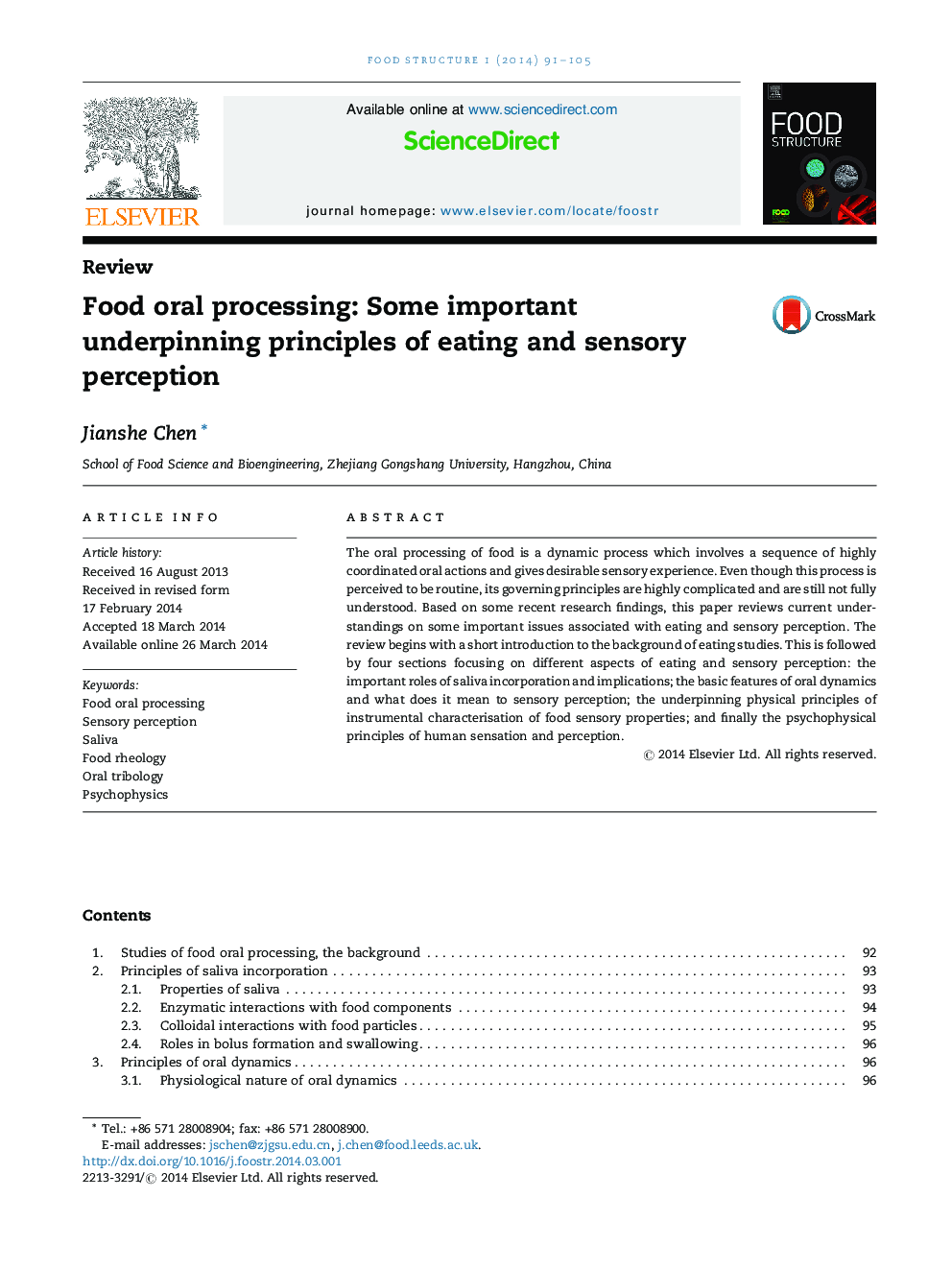| Article ID | Journal | Published Year | Pages | File Type |
|---|---|---|---|---|
| 19938 | Food Structure | 2014 | 15 Pages |
•Saliva is an essential ingredient for food oral processing and has complicated implications to sensory perception.•There is a transition of sensory mechanisms from rheology-dominating to a thin layer tribology-dominating.•The scaling human's oral sensation could be very different from that of an instrumental assessment.•Possible correlations exist between the instrumental scaling and human's scaling of a sensory property.
The oral processing of food is a dynamic process which involves a sequence of highly coordinated oral actions and gives desirable sensory experience. Even though this process is perceived to be routine, its governing principles are highly complicated and are still not fully understood. Based on some recent research findings, this paper reviews current understandings on some important issues associated with eating and sensory perception. The review begins with a short introduction to the background of eating studies. This is followed by four sections focusing on different aspects of eating and sensory perception: the important roles of saliva incorporation and implications; the basic features of oral dynamics and what does it mean to sensory perception; the underpinning physical principles of instrumental characterisation of food sensory properties; and finally the psychophysical principles of human sensation and perception.
